5 Symptoms of a Bad Oxygen Sensor (and Replacement Cost)
Your vehicle’s oxygen sensors monitor combustion efficiency, but like other types of sensors, they can eventually fail. Ignoring deteriorating oxygen sensors allows problems to multiply, hurting performance and fuel economy.
Learn to recognize the subtle symptoms of a bad oxygen sensor because if you catch it too late, you may be dealing with much more expensive repairs down the road.
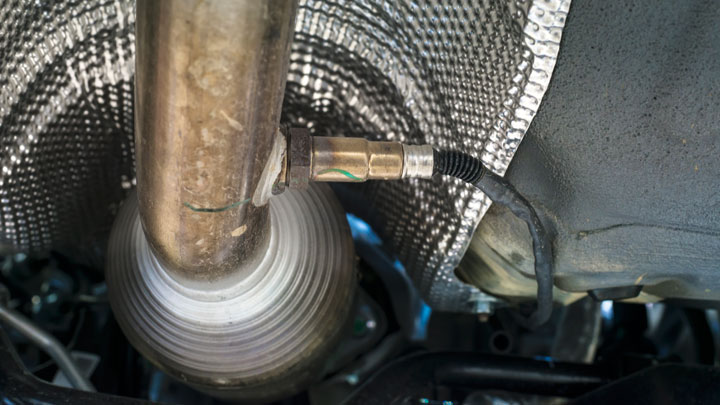
How an Oxygen Sensor Works
The internal combustion engine of your vehicle will always produce exhaust gases after the air and fuel mixture has ignited in its cylinders. These gases contain a lot of different elements in them, such as carbon and oxygen.
In the exhaust manifold, there is a component called an oxygen sensor which keeps track of the oxygen level in these exhaust gases as they leave the engine. This is oxygen that did not burn during the original air and fuel combustion.
After the oxygen sensor detects the oxygen level, it sends this information back to the engine control module. This, of course, is the central computer that manages all the systems in the vehicle and communicates with a variety of different sensors that are within them.
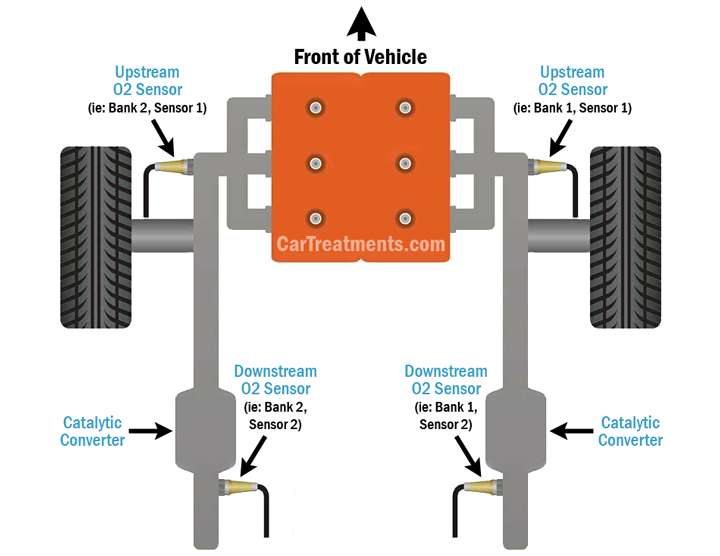
When the engine control module receives information about the oxygen level in the exhaust gases, it will know if the engine is burning too much fuel or too little fuel.
For instance, if there is more air than fuel in the chamber cylinders, this will cause a lean combustion to take place.
The exhaust gases that emit from such a combustion will have more oxygen in them. Once the oxygen sensor detects this and transmits the data to the engine control module, then the computer will make the proper adjustments to the timing of the fuel injectors and the operation of the engine.
That way, the air and fuel mixture in the engine will be at its best for combustion purposes.
Related: Bank 1 vs Bank 2 Oxygen Sensors
Top Bad O2 Sensor Symptoms
The oxygen sensor is a vital component of the engine. If anything were to cause the oxygen sensor to malfunction, it could interfere with the entire internal combustion process. Then you could experience all sorts of problems with your engine while driving.
Fortunately, these symptoms are easy enough to recognize so that you will know trouble exists somewhere in your engine or with its corresponding components.
Below are the top 5 symptoms of a bad or worn out O2 sensor. Although it is not common for this sensor to go bad, it could happen if you keep your car for a long time.
See Also: 5 Symptoms of a Bad Air/Fuel Sensor
#1 – Check Engine Light
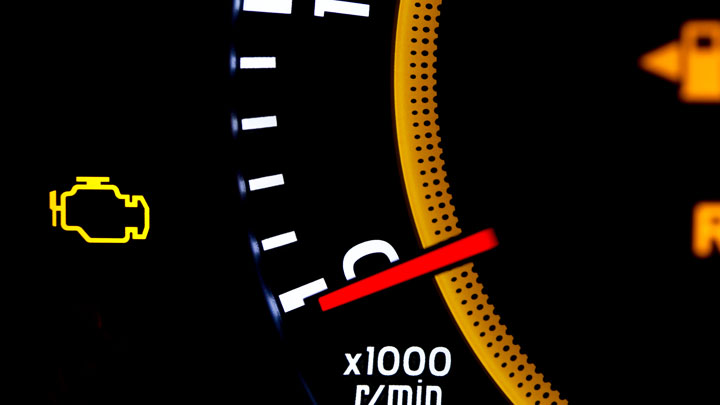
As mentioned, the oxygen sensor has a powerful influence over the air and fuel combustion process. If the sensor detects there to be less oxygen in the exhaust gases after combustion, the engine control module will try to correct this.
But if the oxygen sensor is not working properly, the engine control module won’t know to correct this problem. As a result, the engine’s performance will be diminished.
The module will then detect that some kind of engine problem is present. This causes the Check Engine warning light to illuminate on the dashboard.
Codes P0030, P0031, P0130, P0131, P0132, P0133, P0134, P0137, P0140, P0141, P0161, P0172, P2195, and P2270 are examples of diagnostic trouble codes that may indicate an issue with an oxygen sensor.
#2 – Bad Fuel Economy

If there is a rich air and fuel mixture in any of the combustion cylinders, this means that more fuel is present than air. This will not be detected by the oxygen sensor if it has gone bad.
Then you’ll have a situation where more fuel is being burned in the engine than needed. The result is a bad fuel economy and more money spent on gas.
#3 – Rough Idling
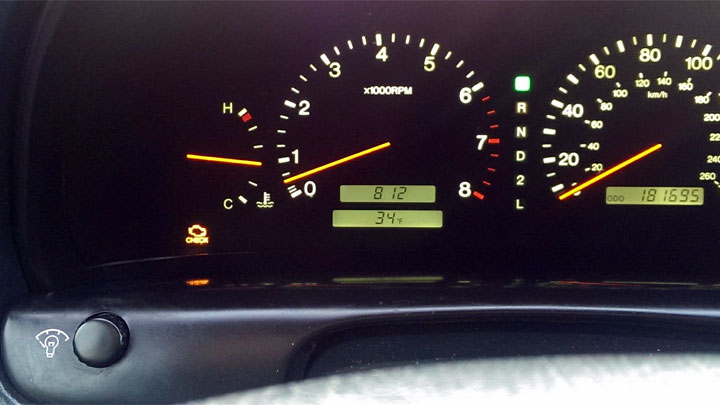
A rough idling engine means your engine does not run steady when the car is parked or stopped. The normal RPM rate for an idle engine is under 1,000. But if your engine RPM shoots up to 2,000 or 3,000, for instance, then you have a rough idling problem.
This can be a symptom of many kinds of car problems, including a bad oxygen sensor. The engine timing will be more difficult for the engine control module to manage. Then you’ll have combustion intervals which cause misfires.
#4 – Weak Engine Performance

Anytime there is interference in the normal combustion process of the engine, you are going to experience a weakened engine performance. This is what will happen when you have a bad oxygen sensor.
You will know this is happening while you’re driving. As you step on the gas pedal, the acceleration will be limited or nonexistent.
#5 – Failed Emissions Test

Since the oxygen sensor is located in the manifold of the exhaust system, it is able to assist with emissions control. If you live in a state which requires regular emissions testing, you might discover that you have a bad oxygen sensor if you end up failing the emissions test.
It might not necessarily be linked to the oxygen sensor, but you will find out as soon as a mechanic checks to see why your vehicle failed the test.
Read also: What Happens when a Timing Chain Breaks while Driving
Oxygen Sensor Replacement Cost
Best places to order parts? See: 19 Best Online Auto Parts Stores
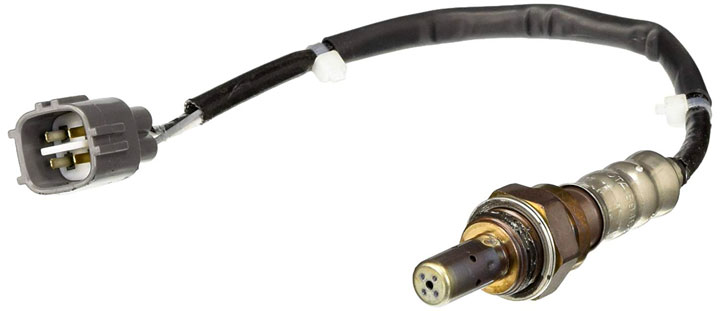
Do not wait to replace your O2 sensor. As soon as you verify that your oxygen sensor is to blame for these symptoms, then it is time to replace this sensor immediately.
Otherwise, you could be putting your engine at risk of getting severely damaged. Then you will be looking at thousands of dollars in repair costs. It is so simple and affordable to replace an oxygen sensor. You really have no excuse not to do it.
The average replacement cost of an oxygen sensor is $60 to $300, depending on the make and model of your vehicle. The parts cost can be anywhere from $20 to $200 and the labor costs are about $40 to $100 depending on where you go and if you’re replacing one or both O2 sensors.
For the average economy car, you should only have to pay at the lower end of the total estimated price range ($250). This is not a huge investment when it comes to protecting your engine and exhaust system and keeping it running in optimal condition.
- Replace the Engine or Replace the Car? (11 Factors to Consider) - Apr 11, 2024
- Plastic Piece Dragging Under Your Car? (What It Is and What To Do) - Mar 21, 2024
- Timing Belt vs Timing Chain (What’s the Difference?) - Feb 27, 2024

Hi.
The RPM of my car stays above 1 at idle. Black smoke and soot comes out of the exhaust pipe. The fuel economy has become very poor. The engine oil becomes black within 700 miles of driving.
It’s a Toyota Corolla 2006 model.
What could be the problem, please?
Engine oil gets dark pretty much as soon as you drive away from the shop. That doesn’t necessarily indicate a problem.
Does the idle sit above 1 even when the car is fully warmed up? Could be a vacuum leak, maybe. You could try pulling the plugs to see if that tells you anything else. Make sure you’ve done the basics like change the engine air filter and fuel filter within the manufacturer recommended intervals.
My car is making a rattling noise and losing power and the engine light is in..the comp pick up the oxigin censor need to be replaced.the noise is my concern
Scan the codes and have a mechanic listen to the noise.
Hi so i have an expedition showing codes for 4 diff oxygen sensors. 2 camshaft solenoids . mass air flow . we replaced all of them plus did oil change replaced fuel pump and still the codes wont go away . it did get better gas mileage after replacing sensors but started running rougher . issues are : rough idle , ghe car shakes or jumps after sitting for a minute , it has no acceleration and aweful gas milage . we did replace them backwards at first and it seemed to get betted still big then put them in the right way and its still doing the same thing and has the codes . yes we reset it / also it dies if going really slow and you have to cautian and put blinkers on and restart
Is this the same for a diesel engine? I have the engine light coming on and off and was told it was the Oxygen sensor. Unfortunately there are no spare parts in Australia for my car and have to keep driving with this problem. Will my engine be damaged eventually?
Hi, do i need to replace catalytic convertor for PO420 error code in Toyota 121.
That is often the solution, yes, but not always. Is this the only code you’re seeing?
I would like to know if you do have Oxygen Sensors for sale, If YES kindly let me know the major credit cards you accept as form of Payment. I will await your immediate response.
Best Regards
Sorry, we do not sell anything directly. We do link to several third party vendors though, so perhaps one of those vendors may have what you need.
Hi – my engine light had been coming on – running rough & higher fuel consumption.
A code sensor showed PO141 – we replaced sensor & reset code but has come back on again
Make sure you replaced the correct sensor. Many vehicles have multiple oxygen sensors.
Also, it’d be a good idea to check the wiring while you’re in there to make sure there is no damage. You can test for continuity using a multimeter, which could reveal a problem you can’t see.
This code could also show up if there is an exhaust leak upstream of the O2 sensor, or an issue with the catalytic converter.
No voltage to the sensor secondary
I have a 2013 avensis, I am experiencing smoke escaping into the cabin and thus smoke is burning my eyes with CO smell, could this be a problem of oxygen sensor or leakage from the exhaust
Do you have any codes? Exhaust leaking into the cabin is a serious health and safety issue and should be fixed by a mechanic.
My ef falcon temperature gauge will go all the way to the hot level then go back down whilst driving. Also can be difficult to start like its flooded
Check your coolant level when the car is cold. If the car is overheating, I would do a leak down test to see if you have a failed head gasket.
Also check if your thermostat is working properly.
I have a 89 corvette. After it warms up about 120 degree’s the idle goes up and down from 900 to 700 RPM. Any idea?
Sounds like you may have a vacuum leak or bad idle air control (IAC) valve. You can test for a vacuum leak by hooking the intake up to a smoke machine and watching to see if the smoke comes out of any area it’s not supposed to.
I have a 2007 Chevy hhr it will. Start up then after about 3 seconds the engine dies I replaced the fuel pump and the mass air sensor . I can spray starting fluid after I start it as long as I spray that it will run . What do you think the problem could be ?
It sounds like there is a fuel restriction that is starving the engine of fuel. I would do a fuel pressure test to see if the problem lies with the injectors, fuel pressure regulator, etc.
it might be stuck idle control valve.
Hi.. what’s the cost of o2 if sienna 1998 model ( 9 hole)? In nigeria. Are the o2 sensors same?
I am not sure what it will cost over there. I think they are the same part, as seen here: https://parts.toyota.com/p/Toyota__Sienna/Oxygen-Sensor/63479391/8946741011.html
I have a misfire code of P0301, with fuel status indicating open loop due to engine load or deceleration coupled with white greyish exhaust smoke. What could possibly be the problem?
It could be spark plugs, plug wires (or ignition coils), or the fuel injector on that cylinder. You could try swapping them to different cylinders to see if the code follows a particular spark plug/wire, coil, or injector.
If that does not reveal the issue, you’ll have to do a bit more diagnostic work to find the problem and it may be best to bring your vehicle to a mechanic to help you narrow it down.
Hi I did change o2 last year December bt now whn I do obd scan shows o2 again what advice can you give me for this problem
There’s a good chance the O2 sensor is not the root cause of the issue. It may be the catalytic converter or an electrical issue, such as a bad ground. More troubleshooting is needed to know for sure.
Hi,
Can I replace these by myself or do I need to also have the fuel line “flushed”?
Thank you,
April
An oxygen sensor has nothing to do with the fuel line, so there is no need to flush the fuel lines. Replacing an oxygen sensor is something you could potentially do yourself, yes. However, if you are not comfortable turning a wrench it won’t cost too much to bring your car to a mechanic for an O2 sensor replacement.
I just got a used TOYOTA Corolla 1998 car and discovered it emits black smoke with tiny/powdered particles and also consuming fuel than normal.
The injectors was serviced and plugs changed, Yet no improvement. When diagnosed, we discovered the oxygen sensor has been permanently disconnected! Pls advise me on what to do. Could the missing o2 sensor be the cause?
Thanks.
That definitely could be the issue. When the O2 sensor goes bad or is unplugged, most cars run in what’s called “open loop” mode, which means the engine computer (ECU) calls for a predetermined amount of fuel without listening to the signal the O2 sensor is sending it. Most of the time, this “predetermined amount of fuel” is much richer than what you’d typically observe while the ECU is monitoring the O2 sensor’s output. Fuel economy suffers and you’ll likely notice more soot and fuel smell when this happens. Nice troubleshooting.
I’d be surprised if the check engine light wasn’t on from this. Replace the O2 sensor, clear the code, then see if the problem goes away. If you have no check engine light, I would check the bulb in the instrument cluster to make sure it hasn’t been permanently disconnected as well.
My 2005 Chrysler Sebring slams into nuetral while I’m driving . I have replaced both of the transmission sensors and at no prevail I still had the same problem. Could this be a faulty O2 sensor or what else could it be.
yes
Mike, did you replace the sensors and did it help? I am having a similar problem with my truck. I have a 99 Isuzu Rodeo and have a code for the O2 sensor and heater. Im going to replace them but i didnt think that would cause that problem.
This info helps. I had been experiencing the poor fuel mileage, rough idling and finally intermittent shutting off, at stoplights . Turns out, one of my 4 oxygen sensors had gone bad on my 2007 Lincoln, along with the purge valve
This is fantastic. Can you help me with an oxygen sensor for camry 2000? I will be eternally grateful